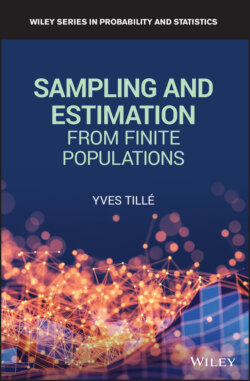Читать книгу Sampling and Estimation from Finite Populations - Yves Tille - Страница 23
Chapter 2 Population, Sample, and Estimation 2.1 Population
ОглавлениеThe theory of survey sampling is a set of tools for studying a population by examining only a part of it. The population denoted by is assumed to be discrete and composed of a finite number of elements, e.g. companies, individuals, and households. Each unit can be identified by a label or an identification number. For simplicity, we will consider that the population is a set of identification numbers, in other words, . There is also a formalization for continuous populations (Deville, 1989; Cordy, 1993) that will not be developed below.
In population , we are interested in variables (or characters) or . The values taken by these variables on the observation unit are denoted by and . In the design‐based approach, and are not random. Indeed, under this approach, the only source of randomness is the way of selecting the sample.
The objective is to estimate parameters in this population. These parameters are also called functions of interest because they do not correspond to the usual definition of parameter used in inferential statistics for a parametric model. Parameters are simply functions of or . For example, the goal may be to estimate totals,
means,
or population variances,
The population size is not necessarily known and therefore can also be an estimation objective. However, as one can write
the estimation of the population size is a problem of the same nature as the estimation of or .
Some parameters may depend jointly on two variables, such as the ratio of two totals,
the population covariance,
or the correlation coefficient,
These parameters are unknown and will therefore be estimated using a sample.
